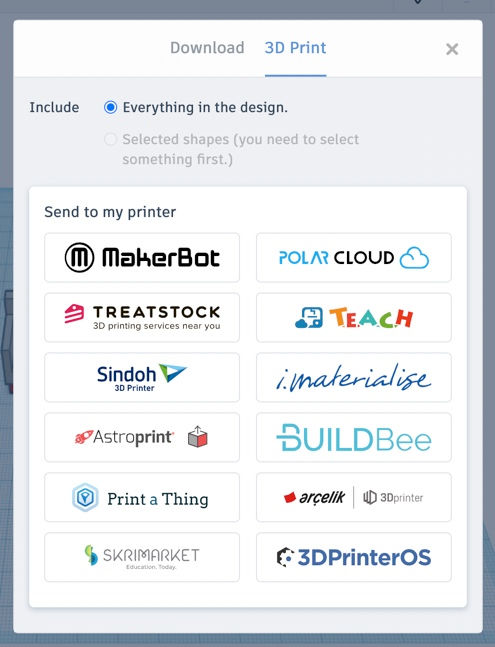Task 1 - 3D printing fostering student creativity
- Zeyba Orya
- Mar 5, 2023
- 3 min read
Updated: Mar 7, 2023
In a world where new technologies are emerging, shifting and progressing, 3D printing is a game changer. 3D printing is a revolutionary manufacturing process that uses digital designs to make tangible products by layering different types of material (Berman, 2012).



How can 3D printing enhance student creativity?
1. 3D printing as a hands-on approach to learning can be used in classrooms to enhance student creativity as it allows pupils to experiment, customise and actualise their own designs (Ratto & Ree, 2012). In a study conducted by Ratto and Ree (2012), students in biology were able to understand complex scientific ideas when using 3D printing technology as they were able to design and alter things like a human organ. All of which demonstrates that 3D printing can have a favourable impact on student's creativity in STEM subjects such as science (Ratto & Ree, 2012).
2. Students have access to great experiential learning opportunities through 3D printing's quick prototyping and iterative design processes (Savage, Blair, & Dillow, 2017). Since students can test out and experiment their own individual designs through tangible means of prototyping, creativity is significantly enhanced (Gao et al., 2015; Savage, Blair, & Dillow, 2017). In light of this, students may get a better understanding of the design process by experimenting with and improving their concepts via several iterations (Gao et al., 2015). This information can help them think more imaginatively about their concepts and generate more innovative design ideas (Gao et al., 2015).
This is an example of how I utilised Tinkercad.com to create this 3D printing example.


Did you know there there may be some challenges and limitations with 3D printing?
Here are few of them:
Technical skills is essential to operate 3D printing technology, which include design software knowledge and printer operation (Mioduser, Lahav, and Eylon, 2016). Students may struggle to explore their creativity when using 3D printing technology as they wont be familiar or have the procifient technical skill to operate 3D printing (Mioduser, Lahav, and Eylon, 2016).
Students' capacity to explore particular design types or produce different size of designs such as large-scale projects may be impeded by the limited printing size imposed by 3D printers (Mioduser et al., 2016).
Pupil's creativity can be hindered as materials that are associated with some printers are expensive and can thus reduce the accessibility of 3D printing in some schools (Karam & Jackman, 2020; Li, Chin, & Li, 2019).



References:
Berman, B. (2012). 3-D printing: The new industrial revolution. Business Horizons, 55(2), 155-162. https://doi.org/10.1016/j.bushor.2011.11.003
Gao, W., Zhang, Y., Ramanujan, D., Ramani, K., Chen, Y., & Williams, C. B. (2015). The status, challenges, and future of additive manufacturing in engineering. Computer-Aided Design, 69, 65-89. https://doi.org/10.1016/j.cad.2015.04.001
Karam, M.C., & Jackman, J. M. (2020). The state of 3D printing in education: A literature review. Additive Manufacturing, 26, 101447.
Li, J., Chen, H., & Li, L. (2019). 3D printing technology and its impact on education: A literature review. Journal of Educational Technology Development and Exchange, 12(1), 1-14.
Mioduser, D., Lahav, O., & Eylon, B. (2016). Are 3D virtual reality environments superior to 2D environments for visualization of complex structures? International Journal of Technology and Design Education, 26(3), 321-337. https://doi.org/10.1007/s10798-015-9334-4
Mioduser, D., Betzer, N., Lahav, O., & Eylon, B. (2016). Is designing and printing 3D molecules a cognitive tool for enhancing students’ spatial abilities? Journal of Science Education and Technology, 25(6), 942-957. https://doi.org/10.1007/s10956-016-9637-9
Ratto, M., & Ree, J. (2012). 3D printing and open source hardware for scientific equipment: A case study of making a syringe pump. HardwareX, 1, 47-60. https://doi.org/10.1016/j.ohx.2017.09.001
Savage, T., Blair, E., & Dillow, M. R. (2017). Innovating with 3D printing in the classroom: Conceptualization and implementation of a curricular unit. TechTrends, 61(4), 331-338. https://doi.org/10.1007/s11528-017-0158-1







Hi Zeyba!
Reading your critique of how 3D printing can be used to foster creativity was really interesting and enjoying to read. I think that students creating their own individual designs forces them to work through the design process and see their ideas come to life in physical form. This would then help them develop great problem-solving skills. Although, you mentioned that "Pupil's creativity can be hindered as materials that are associated with some printers are expensive and can thus reduce the accessibility of 3D printing in some schools (Karam & Jackman, 2020; Li, Chin, & Li, 2019)". Do you think that this could actually be part of the design processes for students which could then foster creativity to try…